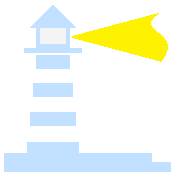

Questions & Answers
How do I find the current location of a ship?
What is the best ship tracker?
Can you track cargo ships?
Can you track US Navy ships?
What is AIS ship tracker?
How many ships are at sea right now?
Is Marine Vessel Traffic accurate?
Is there a flight radar for ships?
What is the Draught of a ship?
How many ships are in the world?
What is vessel in shipping?
How often does Marine Vessel Traffic update?
What is a voyage number mean?
Do military ships have AIS?
Are there any Navy ships in the Great Lakes?
Can ships turn off AIS?
What is the difference between AIS Class A and B?
When can AIS be switched off?
Is there a jail on a cruise ship?
What is the busiest shipping lane in the world?
Do cruise ships have a morgue?
How does ship tracker work?
How do you turn off AIS?
Do I need AIS on my boat?
What type of ship shows up on AIS display?
What is the difference between AIS and radar?
What frequency does AIS transmit on?
How long can a ship stay at sea?
How long does it take a ship to cross the Atlantic?
Is it illegal to jump off a cruise ship?
Where does poop go on a cruise ship?
Are there pirates on the Great Lakes?
Is it hard to get into Navy?
What is the biggest ship in history?
What is freeboard of a ship?
How is ship Draught calculated?
What are the numbers on the front of a ship?
How many cruise ships are currently at sea in the Pandemic?
How long does it take to unload a container ship?
How do I get AIS data? Where can I get AIS data?
Where is the 7th Fleet?
How large is the US Navy fleet?
Where are US Navy fleets located?
What is IMO of vessel?
What does MMSI mean?
What are the types of AIS?
What is the use of AIS?
What is a boat call sign?
Do you need a license for a handheld VHF?
What is the biggest ship that sank?
What is the most famous marine tragedy of all time?
How big was the Titanic?
How do you find the ETA of a vessel?
How many aircraft carriers does USA have?
Where is HMS Queen Elizabeth?
What are the AIS frequencies?
How many ships are lost at sea every year?
Are there still cruise ships stuck out at sea?
Is Marine Vessel Traffic free?
What is the displacement of a ship?
What is the smallest ship?
Which country owns the most ships?
Who owns the most ships in the world?
What is the difference between cargo ship and passenger ship?
How many types of ships are there?
What is the average size of a cargo ship?
What is a sea voyage?
Which US fleet is the biggest?
What Royal Navy ships are based in Portsmouth?
What is the purpose of an annual testing of AIS?
Did U boats enter the Great Lakes?
Do ships have transponders?
What is a Class B AIS?
Why the ship master is allowed to switch off the AIS in specific areas?
Is there police on cruise ships?
Which is the biggest port in world?
What are shipping lanes called?
Why cruise ships are bad?
Where do cruise ships get sent to die?
How much does it cost to live on cruise ship?
What is the biggest ship in the Royal Caribbean fleet?
What do cruise ships do with sewage?
Are cruise ships bad for your health?
How bad are cruise ships for the ocean?
Will you die if you fall off a cruise ship?
How likely are you to die on a cruise ship?
Do cruise ship lifeboats have toilets?
How many cruise ships are there in the world?
What can you not do on a cruise?
Do cruise ships have WIFI?
How long can a ship last?
What was the first ship in the world?
What is difference between a boat and a ship?
Which is the smallest ocean in the world?
Which are the busiest container ports
Which is the biggest port in Europe?
What is the biggest port in the US?
Can you refuse to pay gratuity on a cruise?
Do cruise ships have armed guards?
What cruise ship sank recently?
How often do pirates attack cruise ships?
What is the longest cruise trip?
Do cruise ships leave passengers behind?
How does the AIS work?
What is class of a vessel?
What is a manned VTS?
Is it possible to connect GPS with the AIS?
How do you test an AIS receiver?
What was the start date for implementation of AIS?
What does shipping mean?
What is the thing that stops the boat called?
How many U boats did Germany have in WW2?
Can I join the military at 45 years old?
Can you join the navy if you can't swim?
Is smoking allowed on US Navy ships?
Does the US Navy patrol the Great Lakes?
Do military ships and other government vessels use AIS?
What is a VTS?
What is the main purpose of VTS?
Who has the largest navy in the world?
How many Type 45 destroyers does the UK have?
What ships are part of the 7th Fleet?
What is the flagship of the 7th Fleet?
Where is the 6th Fleet?
How many ships are in the 7th Fleet?
What is the difference between satellite and terrestrial AIS monitoring?